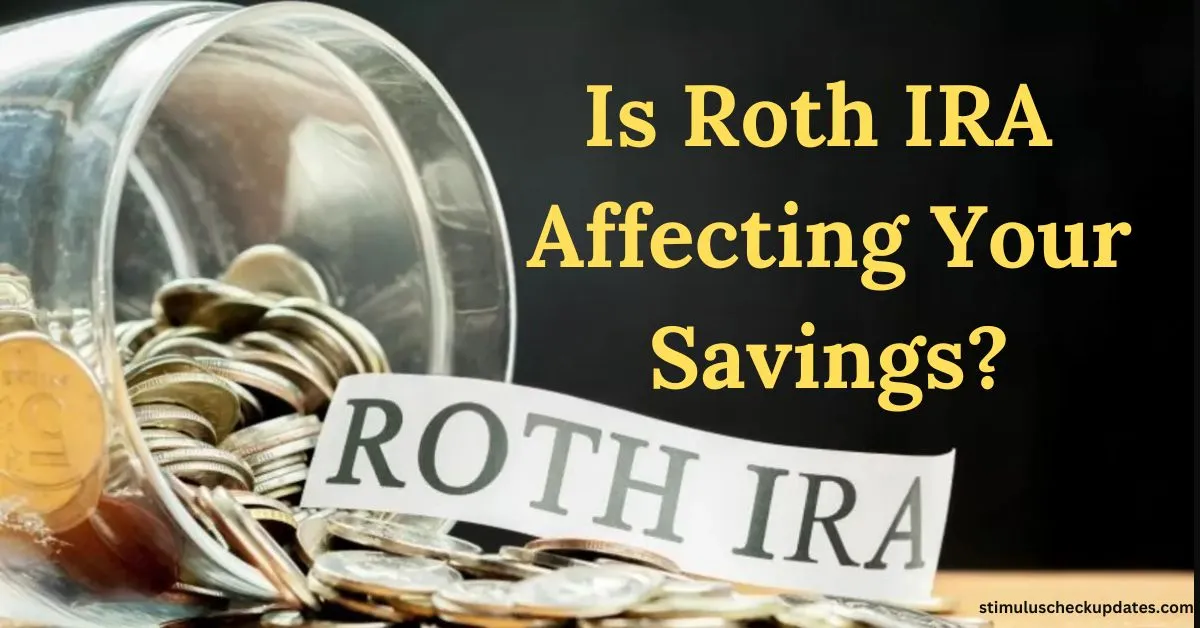What is a Roth IRA?
A Roth IRA is a powerful financial tool that can significantly impact your retirement planning strategy. As we navigate the complexities of personal finance in 2024, understanding the nuances of a Roth IRA is more crucial than ever. This comprehensive guide will delve into everything you need to know about Roth IRAs, from the basics for beginners to advanced strategies for seasoned investors.
Understanding the Basics: What is a Roth IRA?
A Roth IRA (Individual Retirement Account) is a type of retirement savings account that offers unique tax advantages. Unlike traditional IRAs, Roth IRA contributions are made with after-tax dollars, but the growth and withdrawals in retirement are typically tax-free.
Key Features of a Roth IRA:
- Tax-free growth: Your investments grow tax-free within the account.
- Tax-free withdrawals in retirement: Qualified distributions are not taxed.
- No required minimum distributions (RMDs): You’re not forced to withdraw funds at any age.
- Flexible withdrawal rules: You can withdraw your contributions (but not earnings) at any time without penalty.
Roth IRA Contributions: Building Your Nest Egg
Understanding Roth IRA contributions is crucial for maximizing the benefits of this retirement account.
Contribution Limits for 2024
For 2024, the Roth IRA contribution limits are:
- Under 50 years old: $6,500
- 50 years and older: $7,500 (includes $1,000 catch-up contribution)
Roth IRA Income Limits
Your ability to contribute to a Roth IRA may be limited by your income. For 2024, the Roth IRA income limits are:
| Filing Status | Full Contribution | Partial Contribution | No Contribution |
|---|---|---|---|
| Single | < $138,000 | $138,000 – $153,000 | ≥ $153,000 |
| Married Filing Jointly | < $218,000 | $218,000 – $228,000 | ≥ $228,000 |
It’s important to note that these limits are subject to change annually, so it’s wise to check the official IRS website for the most up-to-date information.
Roth IRA Withdrawal Rules: Accessing Your Funds
Understanding the Roth IRA withdrawal rules is essential to avoid penalties and maximize the benefits of your account.
Qualified Distributions
A qualified distribution from your Roth IRA is tax-free and penalty-free. To be considered qualified, the distribution must meet the following criteria:
- The account has been open for at least five years, AND
- One of the following conditions is met:
- You are 59½ years old or older
- You become disabled
- You use the funds for a first-time home purchase (up to $10,000 lifetime limit)
- The distribution is made to your beneficiary after your death
Non-Qualified Distributions
If you withdraw funds from your Roth IRA before meeting the above criteria, you may be subject to taxes and a 10% early withdrawal penalty on the earnings portion of your distribution.
Roth IRA vs Traditional IRA: Choosing the Right Account
When planning for retirement, many individuals find themselves comparing a Roth IRA vs Traditional IRA. Both accounts offer tax advantages, but they differ in key ways:
| Feature | Roth IRA | Traditional IRA |
|---|---|---|
| Contributions | After-tax | Pre-tax (potentially deductible) |
| Growth | Tax-free | Tax-deferred |
| Withdrawals | Tax-free (if qualified) | Taxed as ordinary income |
| RMDs | Not required | Required starting at age 72 |
| Income Limits | Yes, for contributions | No, but may affect deductibility |
Choosing between a Roth IRA and a Traditional IRA often depends on your current tax situation and your expectations for future tax rates. If you anticipate being in a higher tax bracket in retirement, a Roth IRA might be more beneficial.
How to Open a Roth IRA: Getting Started
If you’re convinced that a Roth IRA is right for you, here’s how to get started:
- Check your eligibility: Ensure your income falls within the Roth IRA income limits.
- Choose a provider: Research and select a reputable financial institution or online broker.
- Complete the application: Provide necessary personal and financial information.
- Fund your account: Transfer money from your bank account or another retirement account.
- Select your investments: Choose from options like stocks, bonds, mutual funds, or ETFs.
Many top financial institutions offer Roth IRA accounts. Some of the best Roth IRA accounts providers include:
- Fidelity
- Charles Schwab
- Vanguard
- Betterment
- Wealthfront
When choosing a provider, consider factors such as investment options, fees, customer service, and user interface.
Roth IRA Benefits: Why Choose This Account?
The Roth IRA benefits are numerous and can significantly impact your long-term financial health. Here are some key advantages:
- Tax-free growth and withdrawals: Your investments grow tax-free, and qualified withdrawals are tax-free in retirement.
- No RMDs: Unlike Traditional IRAs, Roth IRAs don’t require minimum distributions, allowing your money to grow indefinitely.
- Flexibility: You can withdraw your contributions (but not earnings) at any time without penalty.
- Estate planning advantages: Roth IRAs can be an effective tool for leaving tax-free money to your heirs.
- Tax diversification: Having both pre-tax and after-tax retirement accounts can provide more flexibility in managing your tax liability in retirement.
Roth IRA Conversion: Transforming Your Retirement Savings
A Roth IRA conversion involves moving funds from a Traditional IRA or 401(k) into a Roth IRA. This strategy can be beneficial if you expect to be in a higher tax bracket in retirement or want to avoid RMDs.
Steps for a Roth IRA Conversion:
- Open a Roth IRA account (if you don’t already have one).
- Contact your Traditional IRA provider to initiate the conversion.
- Choose which assets to convert.
- Pay taxes on the converted amount in the year of the conversion.
It’s important to note that a Roth IRA conversion can have significant tax implications, so it’s wise to consult with a tax professional before proceeding.
Roth IRA Tax Implications: Understanding the Financial Impact
While Roth IRA contributions are made with after-tax dollars, there are still important Roth IRA tax implications to consider:
- No immediate tax deduction: Unlike Traditional IRA contributions, Roth IRA contributions don’t reduce your taxable income for the year.
- Tax-free growth: Your investments grow tax-free within the account.
- Tax-free qualified withdrawals: When you take qualified distributions in retirement, you pay no taxes on the withdrawals.
- No tax on contributions withdrawn: You can withdraw your contributions (but not earnings) at any time without tax or penalty.
- Conversion taxes: If you convert a Traditional IRA to a Roth IRA, you’ll owe taxes on the converted amount in the year of the conversion.
Understanding these tax implications can help you make informed decisions about your retirement savings strategy.
Roth IRA for Beginners: Getting Started on Your Retirement Journey
If you’re new to retirement planning, a Roth IRA for beginners can be an excellent starting point. Here are some tips to help you get started:
- Start early: The power of compound interest means that even small contributions can grow significantly over time.
- Contribute regularly: Set up automatic contributions to make saving a habit.
- Understand your investment options: Educate yourself on different investment types and their risk levels.
- Diversify your portfolio: Spread your investments across different asset classes to manage risk.
- Monitor and adjust: Regularly review your investments and adjust your strategy as needed.
Remember, the key to successful retirement planning is consistency and patience. Even small, regular contributions to your Roth IRA can add up to a substantial nest egg over time.
FAQs About Roth IRAs
Q1: Can I contribute to a Roth IRA if I have a 401(k) through my employer?
A1: Yes, you can contribute to both a Roth IRA and a 401(k) in the same year, as long as you meet the Roth IRA income limits and don’t exceed the annual contribution limits for each account type.
Q2: What happens if I contribute too much to my Roth IRA?
A2: Excess contributions to a Roth IRA are subject to a 6% penalty tax each year until the excess is corrected. You can withdraw the excess contribution and any earnings before your tax filing deadline to avoid the penalty.
Q3: Can I use my Roth IRA to save for a house?
A3: Yes, you can withdraw up to $10,000 from your Roth IRA penalty-free for a first-time home purchase, as long as the account has been open for at least five years. This $10,000 is a lifetime limit.
Q4: What’s the five-year rule for Roth IRAs?
A4: The five-year rule states that you must have had your Roth IRA open for at least five tax years before you can withdraw earnings tax-free, even if you’re over 59½.
Q5: Can I contribute to a Roth IRA if I’m retired?
A5: You can contribute to a Roth IRA at any age, as long as you have earned income and your income falls below the Roth IRA income limits.
Conclusion
Maximizing Your Retirement Savings with a Roth IRA. A Roth IRA can be a powerful tool in your retirement planning arsenal. With its unique tax advantages, flexibility, and potential for long-term growth, it’s an option worth considering for many investors. Whether you’re just starting your retirement savings journey or looking to diversify your existing portfolio, understanding the ins and outs of Roth IRAs can help you make informed decisions about your financial future.
Remember, while this guide provides a comprehensive overview of Roth IRAs, individual financial situations can vary greatly. It’s always wise to consult with a qualified financial advisor or tax professional to determine the best strategy for your specific needs and goals.
By taking advantage of the benefits of a Roth IRA and following sound investment principles, you can work towards building a secure and comfortable retirement. Start your journey towards financial freedom today by exploring the possibilities of a Roth IRA.

